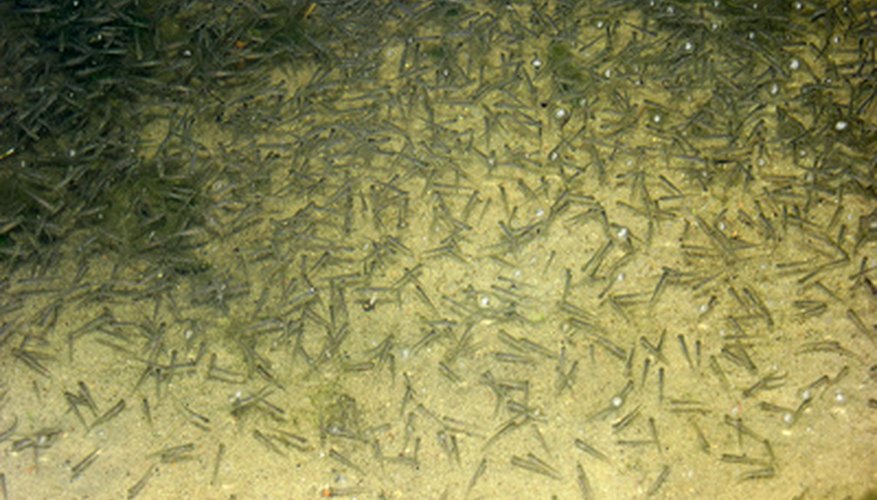Perhaps nothing is more exciting than seeing animals in your care reproduce. Fish can have a startling amount of offspring at a time, sometimes leaving the caretaker wondering exactly what to do. Luckily, most pond species---whether in a natural pond or an artificial one---do best with minimal intrusion, but you can take a few basic steps to provide the best possible survival rate for the baby fish.
Make sure that the pond offers plenty of dense plantings in at least one area to provide a safe, secure place for the baby fish (called fry) to hide out in and get away from potential predators. If the pond does not already have natural plant growth, you can purchase additional plants from pond supply stores to add hideaways for the baby fish. Remember that even the fish's parents will eat them given a chance, so providing cover is crucial to their survival. Other good hideaways include rocks, driftwood, and commercially available "fry hideouts."
- Perhaps nothing is more exciting than seeing animals in your care reproduce.
- Remember that even the fish's parents will eat them given a chance, so providing cover is crucial to their survival.
Feed the baby fish a quality brand of fry food, or infusoria, only if their pond is not well-established; most baby fish feed primarily on microscopic organisms and algae during their first weeks, and the addition of fry food can harm water quality. Natural ponds require no food to be added, and established artificial ponds will only require feeding after the first week. Then you can offer the baby fish powdered fish pellets or fry food.
- Feed the baby fish a quality brand of fry food, or infusoria, only if their pond is not well-established; most baby fish feed primarily on microscopic organisms and algae during their first weeks, and the addition of fry food can harm water quality.
Keep the water quality high in man-made ponds by increasing filter output slightly for the first few weeks after hatching. Ornamental pond fish, such as koi, can be particularly sensitive to water quality when they are newly hatched. This sensitivity combined with the introduction of fry food, which can cause ammonia levels to creep up, can make losing an entire pond of fry very easy if the water parameters are not watched carefully.
Transition the young fish slowly to larger and larger food until they are eating the same things as the adults. Depending on the species, this may take anywhere from a few weeks to a few months, during which time the fry will have increased in size to no longer be food options for the adults.
Remove fry hideouts if you desire, or leave them in the pond for future generations of baby fish.
